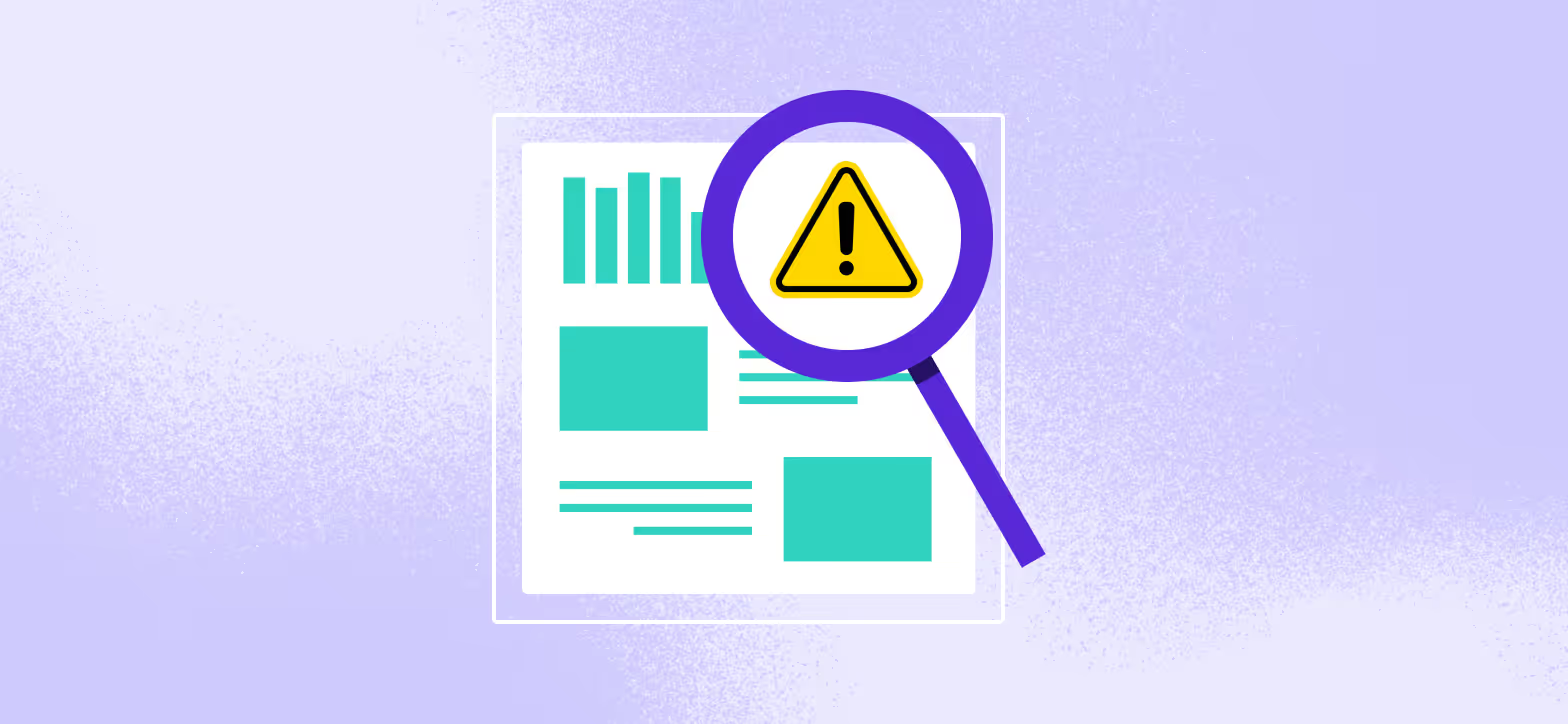Teams are juggling dozens of KPIs, making procurement dashboards extremely bloated and overwhelming to stakeholders. Tracking too many procurement KPIs often leads to less impact, not more.
And what happens? CFOs tune out, department heads disengage, and procurement stays stuck in the back office and gets sidelined as a tactical cost center.
We’ve developed a lean, strategic 12-KPI framework. This approach focuses on metrics that are audience-specific and action-oriented, connecting to financial outcomes, operational efficiency, and stakeholder trust.
What Are Procurement KPIs?
Procurement KPIs, or Key Performance Indicators, are measurable metrics used to evaluate the performance, efficiency, and strategic impact of a company’s procurement function. These KPIs help teams track how effectively they manage supplier relationships, reduce costs, enforce compliance, and support broader business goals.
In high-growth tech companies, where speed, budget control, and software spend are uniquely complex, procurement KPIs serve as a strategic compass. The right KPIs offer visibility into spend, demonstrate value to finance leaders, and ensure procurement is enabling, not obstructing, the business.
The 12 Procurement KPIs You Actually Need
We’ve categorized these 12 effective procurement KPIs into four stakeholder-aligned categories:
- Financial Impact – What your CFO actually cares about
- Spend Visibility & Control – Your operational foundation
- Process Efficiency – Metrics your stakeholders feel
- Strategic Partnership – How you build influence internally
Let’s break them down.
Financial Impact KPIs
Speak the CFO’s language. These procurement KPIs prove your value to finance and executive leadership by linking your work to budget outcomes.
Hard Savings Realized (Target: 5–8% of managed spend)
This key procurement performance metric measures the budget reductions achieved through negotiations, vendor rationalization, or contract restructuring. It's your most direct contribution to profitability.
Savings Realized Percentage (Target: >85%)
This metric shows what percentage of your negotiated savings actually hit the P&L (and/or reinvested back into R&D, growth, product, etc.). It reinforces your credibility and execution discipline.
Cost Avoidance (Tracked quarterly)
Cost avoidance captures proactive actions like usage reductions, cancelled renewals, and “no decision” outcomes that prevent spend before it happens. It's often overlooked but essential to long-term efficiency.
Stack Consolidation Impact (Tracked monthly or ongoing)
This tracks recurring savings from eliminating overlapping tools or reducing license counts. It’s especially relevant in tech procurement where SaaS sprawl is rampant.
Spend Visibility & Control KPIs
These KPIs are foundational–think your operational baseline. Without visibility, there is no control. Without control, there is no ability to think strategically about your investments.
Spend Under Management (Target: >90%)
Tracks what percentage of total company spend is managed by procurement–the higher this percentage, the better. A lower percentage means poor compliance, low spend transparency, and greater risk for maverick spend.
Maverick Spend (Target: <5%)
This measures rogue or off-contract spending—purchases made without procurement’s involvement. Keeping this low protects pricing power and mitigates risk.
License Utilization Rate (Target: >85%)
This procurement KPI measures the percentage of procured software licenses that are actively used. Low utilization rates often indicate overprovisioning, shadow IT, or software that’s misaligned with team needs. Tracking this helps reduce waste, improve renewal decisions, and maximize ROI on your SaaS portfolio.
Process Efficiency KPIs
These metrics reflect how well procurement enables the business and isn’t a roadblock for stakeholders.
Time to Approve (Target: <3 business days)
Tracks average time to approve standard procurement requests. Quicker approvals mean smoother operations and happier stakeholders.
Competitive Process Completion Rate (Target: >70% of eligible deals)
Measures how many qualifying purchases go through a competitive sourcing process (e.g., RFP, multiple bids). It ensures pricing rigor without sacrificing speed.
Contract Renewal Coverage (Target: 100% of contracts >60 days out)
Tracks proactive engagement on contract renewals. Prevents auto-renewal surprises and missed negotiation windows.
Strategic Partnership KPIs
This is procurement’s reputation engine. These KPIs reflect your internal influence and ability to operate as a strategic business partner.
Procurement NPS (Target: 8+)
An internal Net Promoter Score (NPS) that captures how likely stakeholders are to recommend or re-engage with procurement. It’s a powerful indicator of trust and ease of collaboration.
Price Benchmarking Coverage (Target: 100% of deals >$25K)
Shows what percentage of large purchases include pricing benchmarks (from databases or external validation). It reinforces fair pricing and confidence in decisions.
How to Roll Out the 12 Procurement KPIs (Phased Roadmap)
We’re not saying it’s impossible, but trying to implement and track all 12 procurement KPIs at once could be a recipe for failure when time and resources are limited. Here's a rollout plan you can follow (and/or iterate) based on your priorities:
Phase 1: Foundation
Start with Spend Visibility and Control. You can't optimize what you can't see.
- Implement spend tracking systems
- Establish baseline measurements
- Focus on increasing Spend Under Management
Phase 2: Efficiency
Layer in Process Efficiency metrics that help you run your procurement process with better speed and consistency.
- Streamline approval workflows
- Implement competitive bidding processes
- Establish renewal tracking systems
Phase 3: Value Creation
Activate Financial Impact tracking to align results with budget outcomes.
- Begin systematic savings capture
- Implement cost avoidance tracking
- Start quarterly savings reporting
Phase 4: Partnership
Develop Strategic Partnership capabilities to build internal trust (and enjoyment) with procurement.
- Launch internal NPS surveys
- Implement price benchmarking tools
- Build stakeholder feedback loops
When to Report the 12 Procurement KPIs
Similar to above, here’s a general reporting plan of these procurement KPIs for stakeholders that you can follow (and/or iterate) based on your priorities:
Weekly Procurement Standup
KPIs to focus on: Time to Approve, Contract Renewal Coverage, Maverick Spend, Stack Consolidation Impact
Monthly Spend Review (with CFO, Department Heads)
KPIs to focus on: Hard Savings Realized, Savings Realized %, Spend Under Management
Quarterly Business Review (with CFO, Executive Leadership, Board)
KPIs to focus on: Hard Savings Realized, Savings Realized %, Spend Under Management, Cost Avoidance, Competitive Process Completion, Procurement NPS, License Utilization Rate
Quarterly Stakeholder Enablement Check-In
KPIs to focus on: Procurement NPS, Price Benchmarking Coverage, License Utilization Rate
The Bottom Line: Start Measuring What Moves the Needle
Don't track everything. Track what matters.
This isn’t about building a prettier dashboard. It’s about making procurement a measurable strategic lever in your business.
- Stakeholder alignment: Different KPIs for different stakeholders.
- Phased implementation: Easy to scale without overwhelming your team.
- Behavioral impact: Every metric drives action, not just reporting.
By aligning your procurement KPIs to financial impact, visibility/control, efficiency, and partnership, you give your team the tools to earn trust, speed up operations, and prove ROI.
Grab a downloadable cheatsheet version of this checklist here.
Related blogs
Discover why hundreds of companies choose Tropic to gain visibility and control of their spend.







.avif)